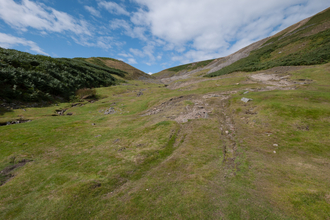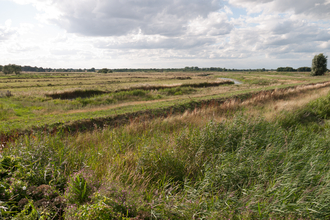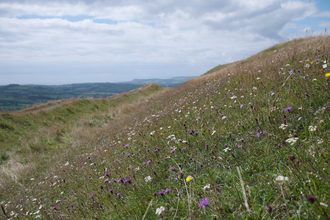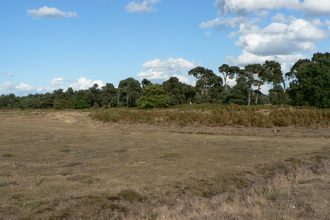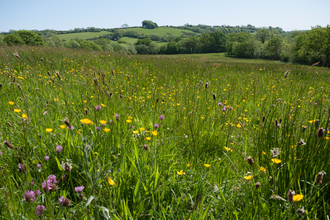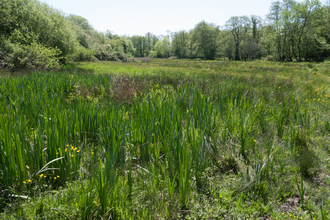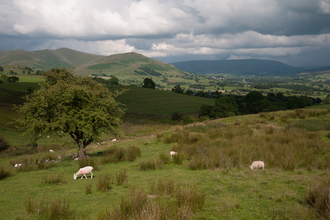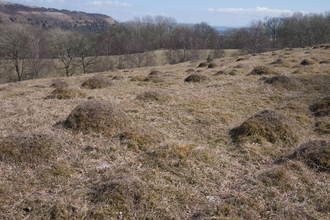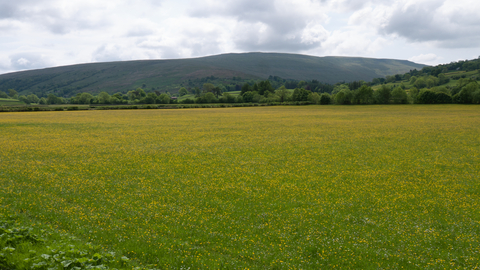
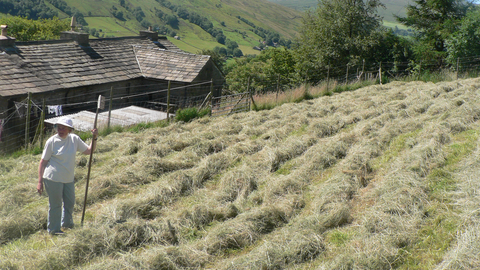
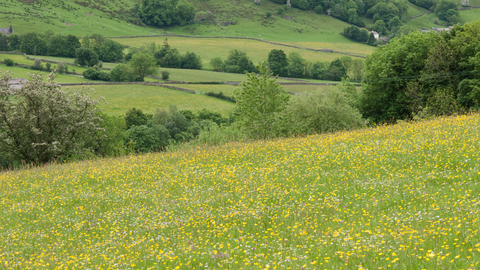
Northern hay meadow
What is it?
As the name suggests, Northern Hay Meadows are found in the cool climate of northern England (with a few outliers in Scotland). This neutral (neither calcareous nor acid) grassland is found in flat valley bottoms, between about 200-400m altitude, and is usually contained within small, stone-walled fields, each with its own stone barn. Typically, they sit between a river and enclosed rush pasture, with upland acid grassland or moorland on the higher slopes above.
A long tradition of use as hay meadows has resulted in a rich mix of grasses, buttercups, wood cranesbill, lady’s-mantles, daisies, yellow-rattle, water avens and great burnet that is unique to this habitat, and to river banks and road verges within the same landscape.
Why is it like this?
Species-rich hay meadows are found where neutral, reasonably fertile brown earth soils on relatively flat land support a lush sward, suitable for cropping. The vegetation is probably derived from the tall-herb flora that followed the last glaciation and survived in woodland glades. Following the development of suitable metal tools in the Iron Age, dried herbage rather than tree-forage became the winter mainstay for livestock, and vegetation tolerant of a regime of cutting and grazing developed. The habitat is therefore dependent on haymeadow management.
The meadows are grazed through the winter and then the livestock removed onto moorland or upland pasture in the late spring to allow the sward to grow up. Annual cutting around mid-July, followed by the grazing of any re-growth, prevents competitive grasses from smothering less vigorous plants and allows finer herbs and grasses to flourish. Yellow-rattle, a common component of the sward, also plays a role in maintaining diverse swards as it is partially parasitic on grasses and reduces their vigour. Regular applications of farmyard manure and lime renew the nutrients removed in the hay and lost through gradual leaching from the soil, maintaining fertility at optimum levels.
Distribution in the UK
There is less than 1000 ha of northern hay meadow remaining in the UK, mainly in the Yorkshire Dales and parts of Cumbria, Lancashire and Co. Durham.
What to look for
The flora of northern hay meadows is enticing (however, remember there is no right to roam through haymeadows, which provide a valuable crop). The meadows hold a profusion of widespread species supplemented by northern specialists such as wood cranesbill, globeflower, lady’s mantle and, on more lime-rich soils, bird’s-eye primrose. Corncrake is sadly long-gone, but twite can sometimes be seen feeding on seed heads and snipe, redshank and lapwing may nest in damper patches. Invertebrates are attracted to the abundant nectar and in turn attract swallows, but the radical change in conditions brought about by cutting limits the fauna – however, uncut corners and margins provide an ongoing nectar source and also support species intolerant of cutting. Look out for old lime kilns, often higher up the fell, the source of the lime once used to help fertilise the swards.
Conservation
The importance of meadows in the agricultural economy meant that many persisted into the mid-20th century. However, mechanisation and the availability of plastic wrapping has allowed silage-making to replace hay-making. Silage is more nutritious than hay, and the grass can be cut earlier (meaning that more than one cut can be taken in a season) and it does not need drying, conveniently avoiding the need for several consecutive days of dry weather. However, it requires greater investment in expensive machinery, requiring greater returns, which are usually obtained through the use of artificial fertilisers.
Artificial fertilisation and early, repeated cutting results in uniform swards dominated by just a few grasses and can devastate bird and invertebrate populations. Together with ploughing, reseeding and a switch to more intensive sheep-based systems, silage-making has resulted in the severe loss and degradation of this habitat. Agri-environment schemes have targeted remaining species-rich meadows with mixed success; community based projects celebrating both the cultural and wildlife aspects of northern hay meadows and developing and using expertise in restoration techniques are helping maintain existing meadows and restore degraded swards.

